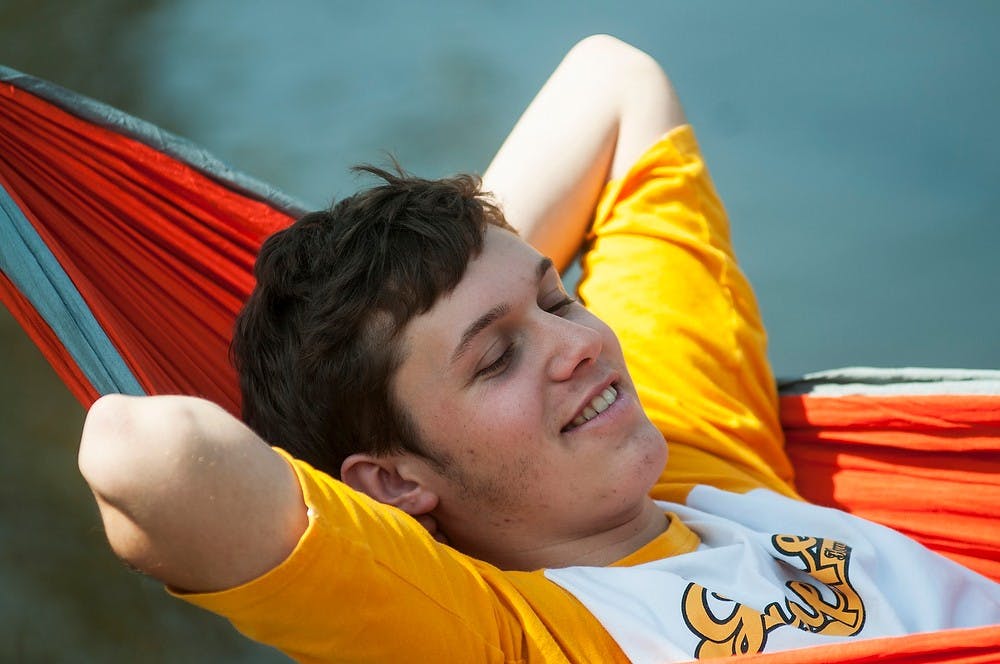A number of outdoor activities are indicative of springtime on campus. Of these, hammocking is one of the most notable.
However, many students fail to realize that hammocking is effectively banned on campus, due to ordinance 24.01, which was enacted in 1964 and only amended as recently as 1995.
The language of the ordinance states, “No person shall break or cut branches ... or otherwise damage or mutilate any tree.”
The punishment for violating this ordinance is shared between all ordinances adopted by the MSU Board of Trustees and includes the possibility of being charged with a misdemeanor, which can lead a maximum fine of $100 with the possible addition of a maximum 90-day jail sentence, or a civil infraction.
“I myself have not been told to take down my hammock,” MSU Hammocking Club President Matthew Ciolino said. “However several members have been by landscaping employees.”
Ciolino, a food industry management junior, believes hammocking is an important part of campus life.
“Being able to bask in nature’s presence while laying in a hammock allows students to fully grasp the connection between campus and themselves,” he said.
Plant biology professor Frank Telewski shares a different view and has the best interests of the campus trees in mind.
“The major problem is that repetitive hammocking increases the risk for damage to bark,” he said.
In addition to the damage caused by hammocks, additional threats to trees on campus include native pests, vehicles parked on root systems during football season, construction on campus, painting trees and carving words or initials into tree bark, Telewski said.
The damage caused by hammocks is already apparent in some trees.
“Paul Swartz, the campus arborist, sent me a photograph of a tree with erosion caused by repeated hammocking,” he said.
Swartz could not be reached for comment.
Ciolino and others are determined to create an environment where hammocking is done in a safe manner, but Telewski still has some reservations.
“I would prefer if people just not use the trees,” Telewski said.
Members of the Hammocking Club executive board will be meeting with officials from Infrastructure Planning and Facilities on Tuesday to discuss some alternative options to an outright ban on hammocks, Ciolino said.
“Our current initiative that we want to propose to the committee on Tuesday is set up two ways,” Ciolino said. “One, we set up hammocking ‘safe zones’ or designated trees that are ‘strap friendly.’ Second, we set up an MSU- and Hammocking Club-approved training session. ... With this program we can pass out certificates or cards that only members will have. Then once our members have properly obtained this training can they go out and hammock.”
Ciolino said the group refuses to give up hope.
“Hammocking is currently banned campus-wide. However we are still here and fighting for our right to hammock on campus,” he said.







